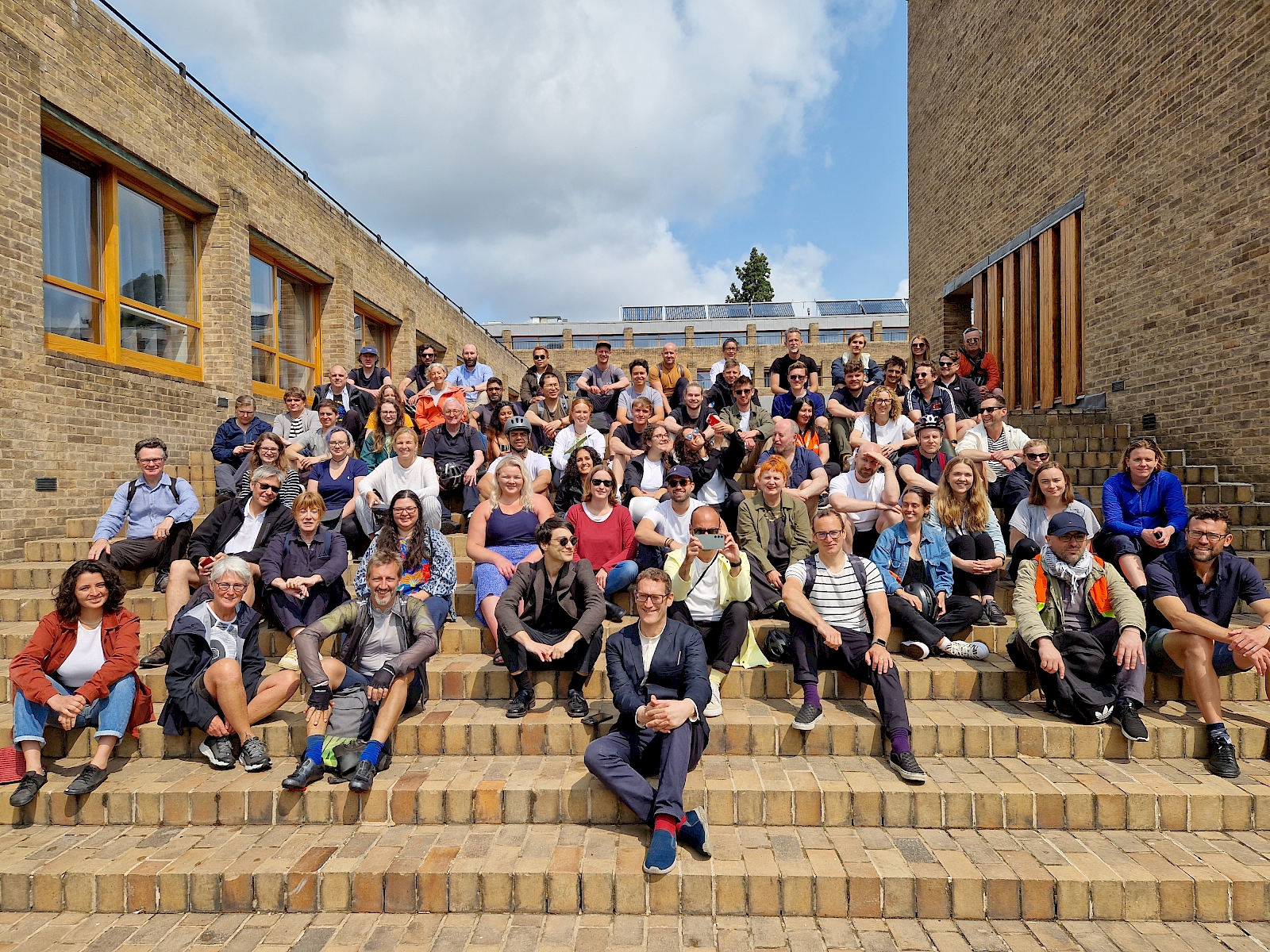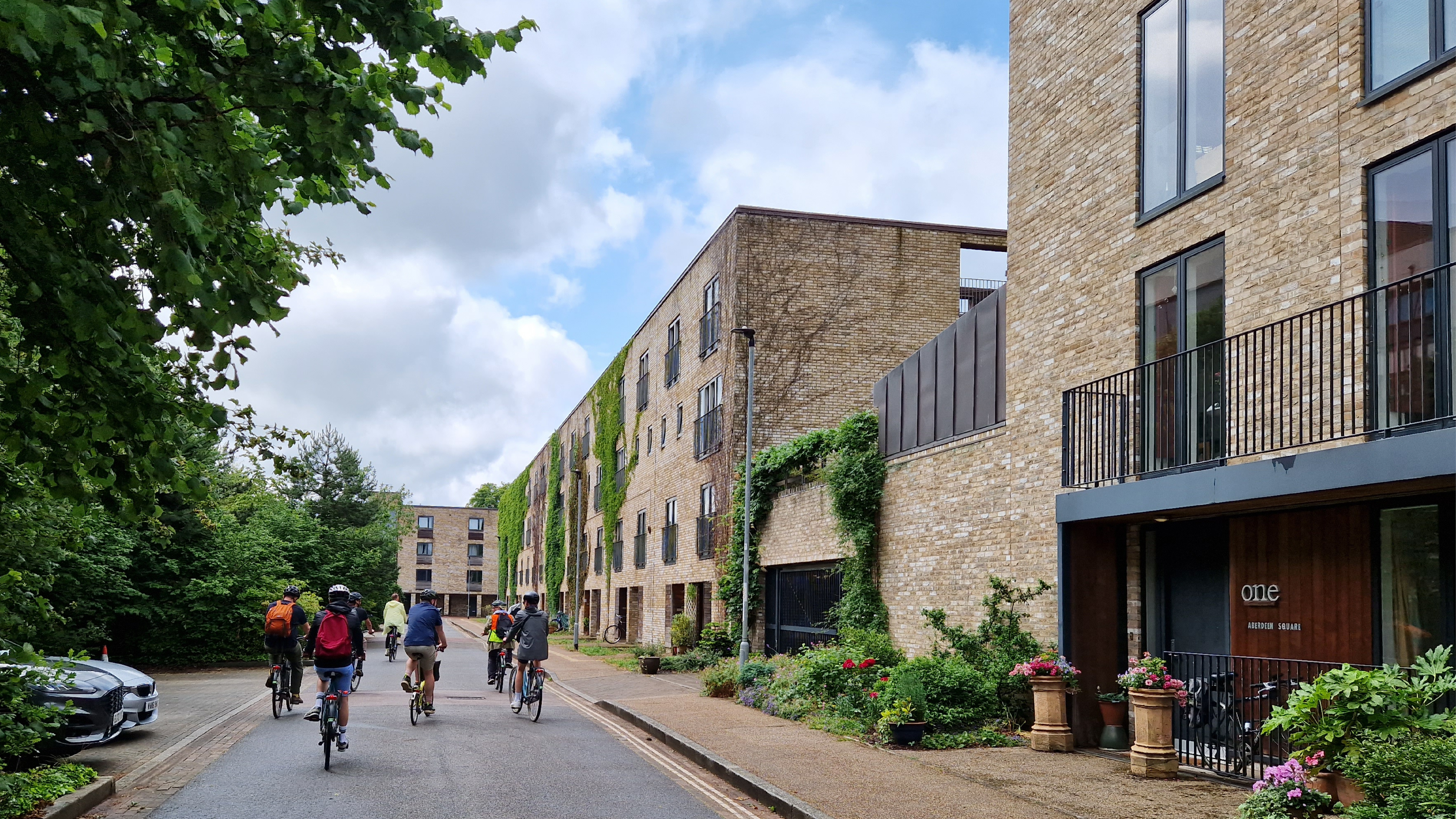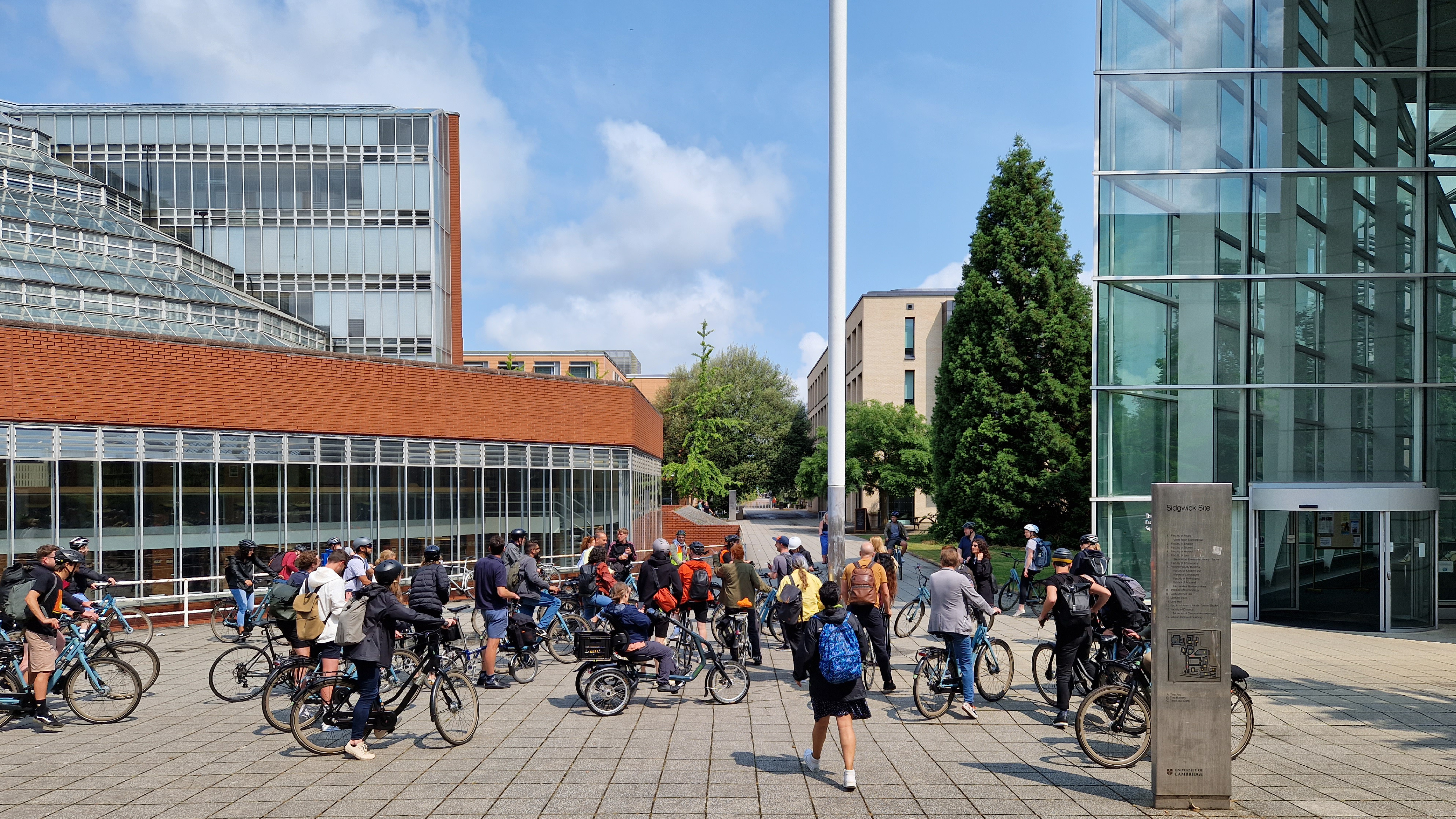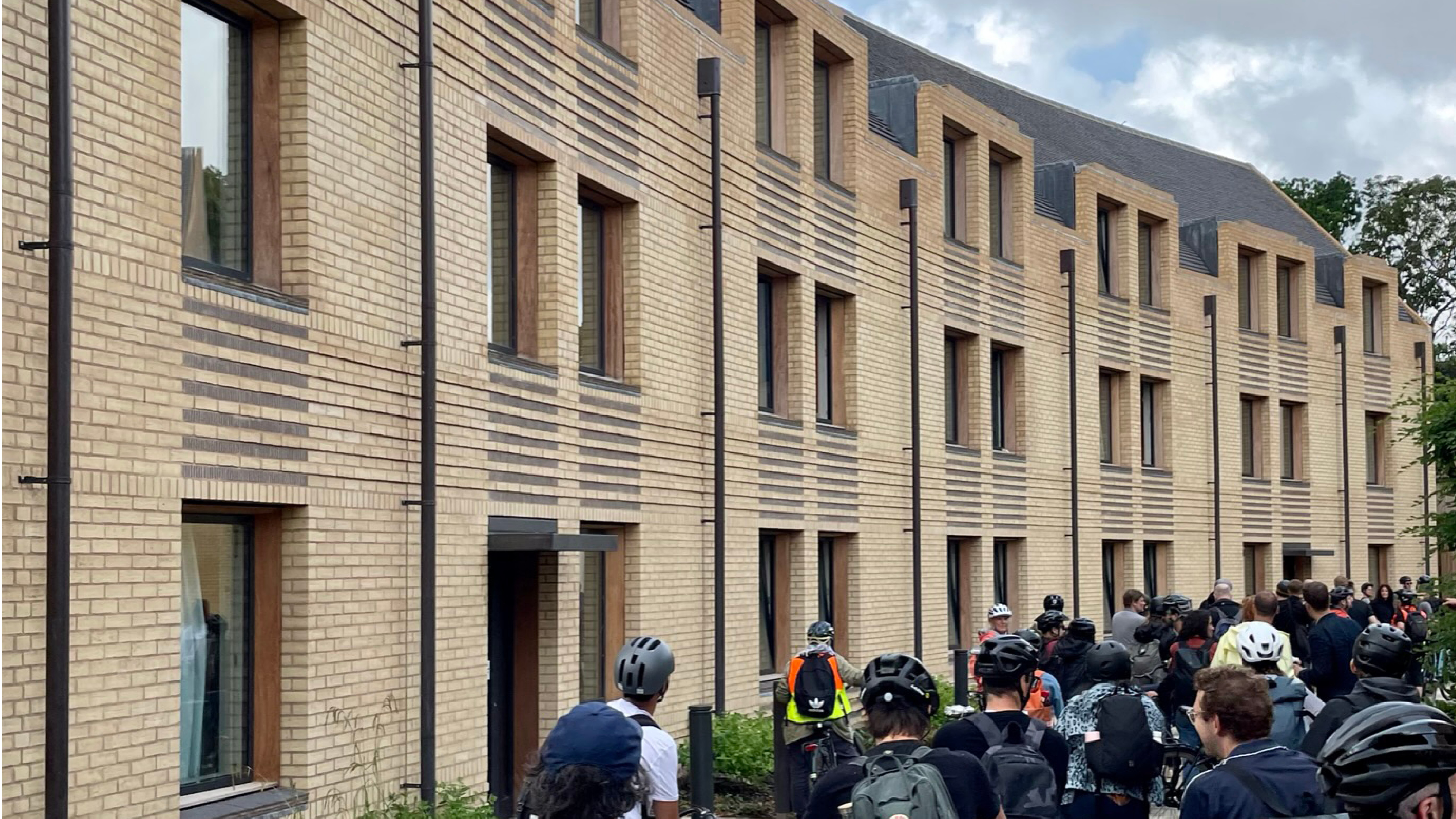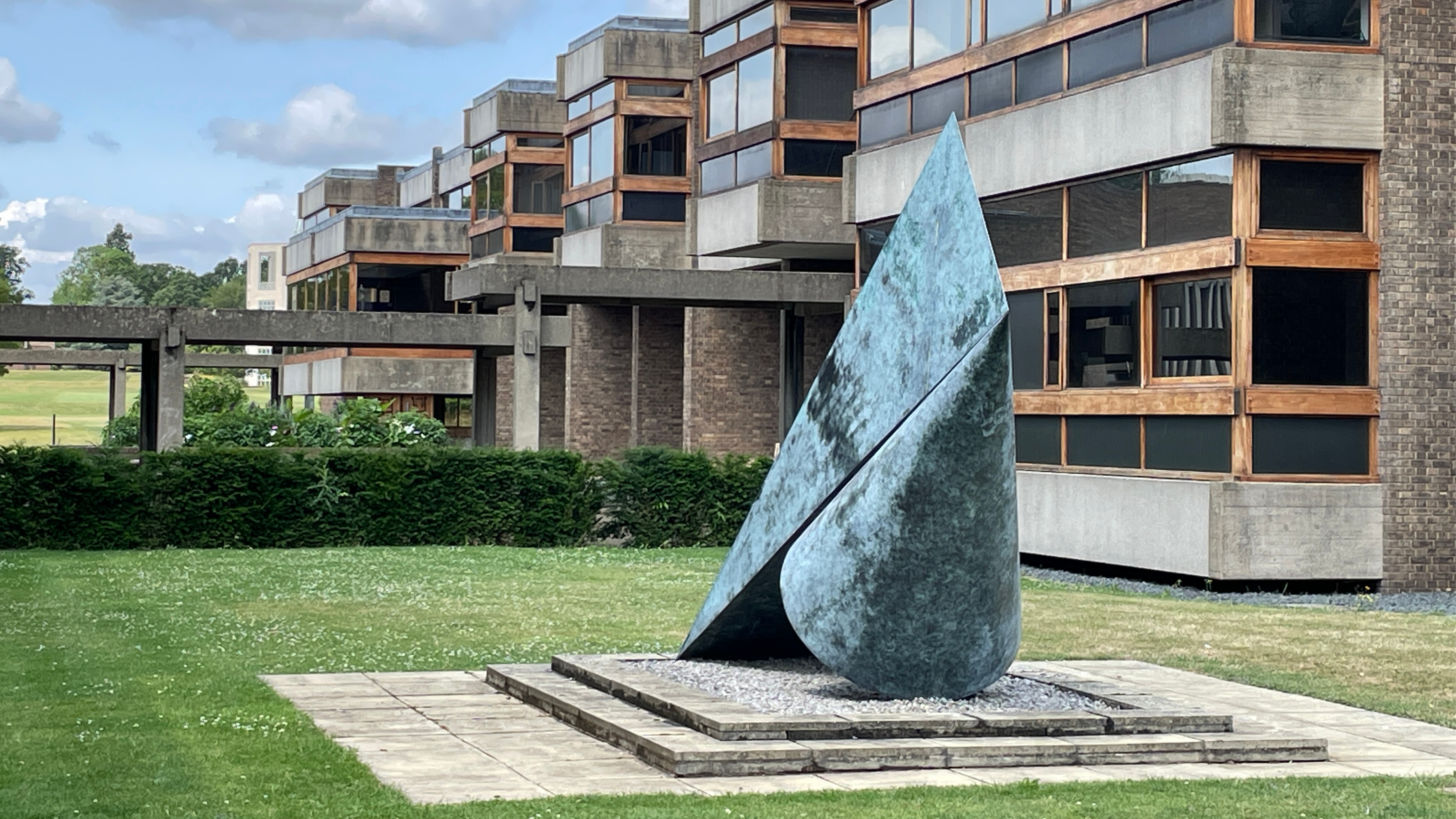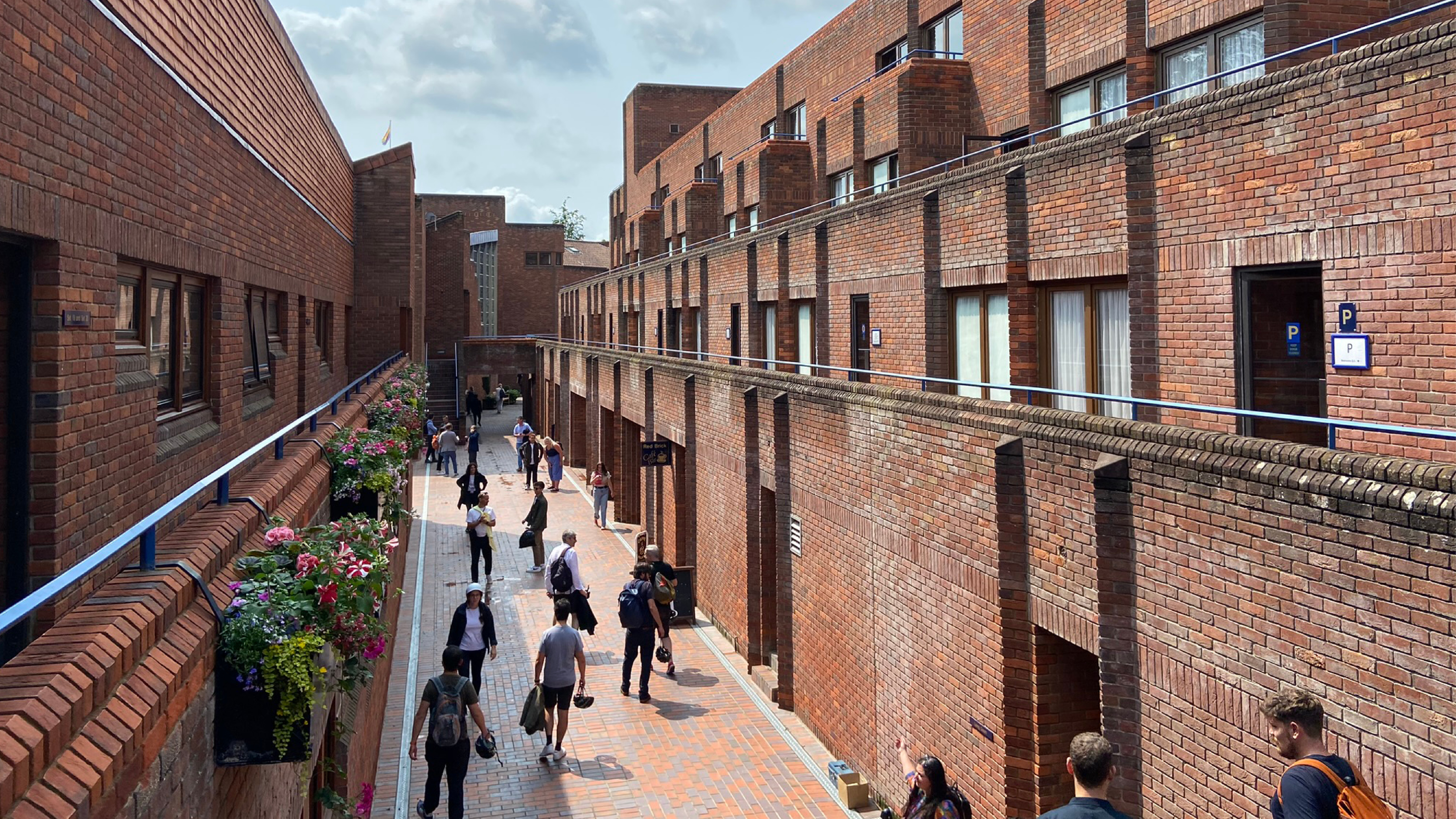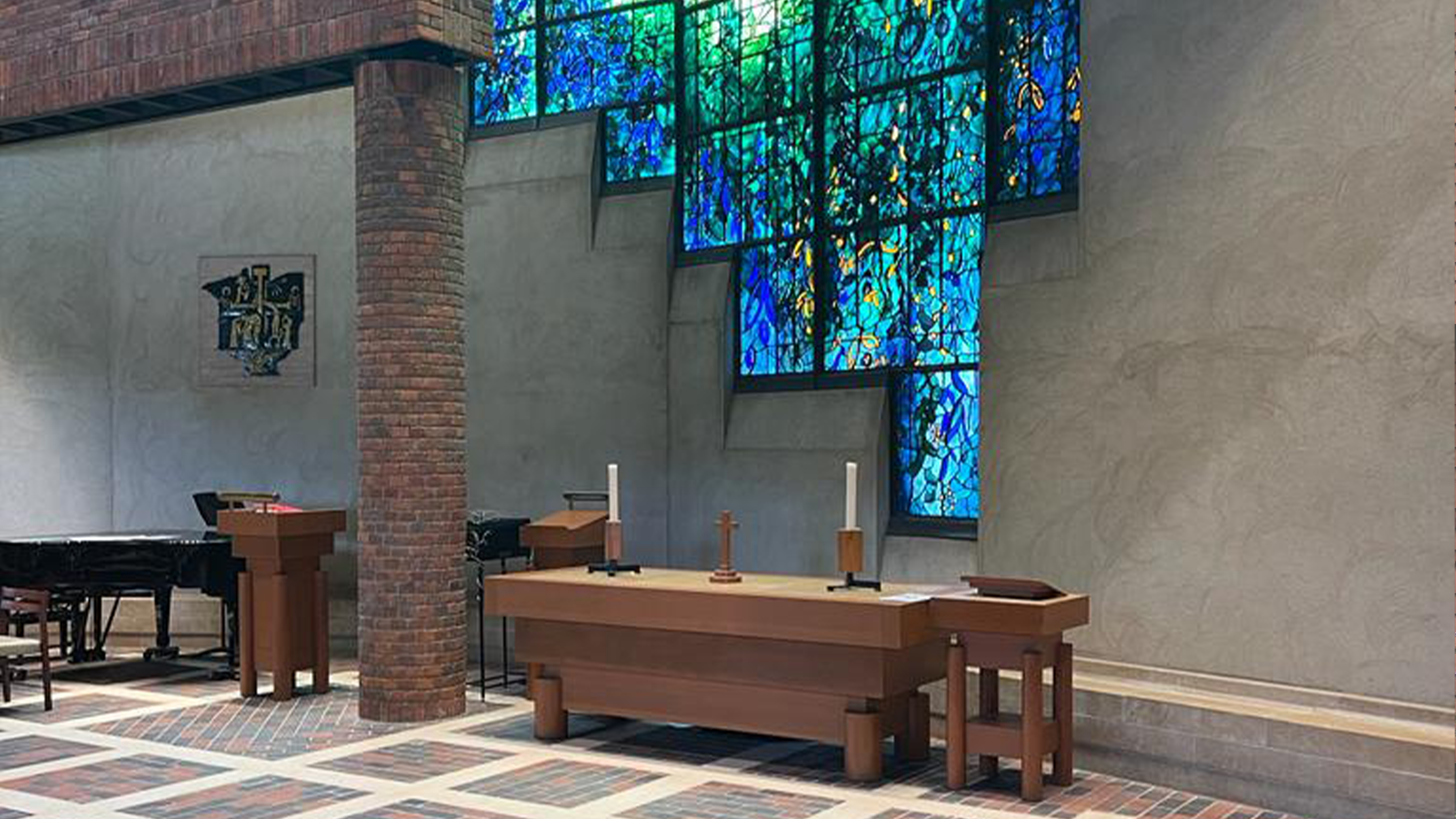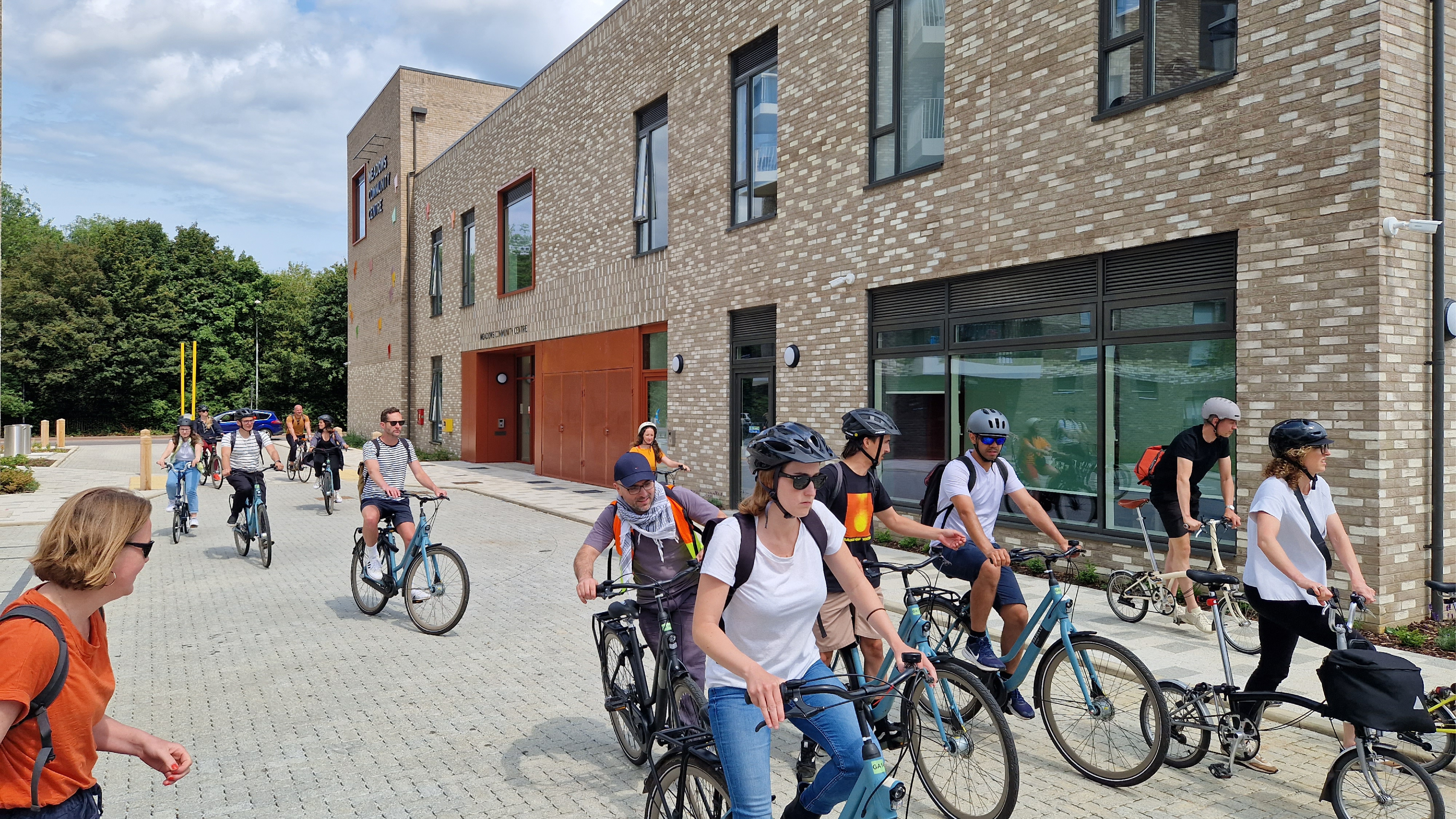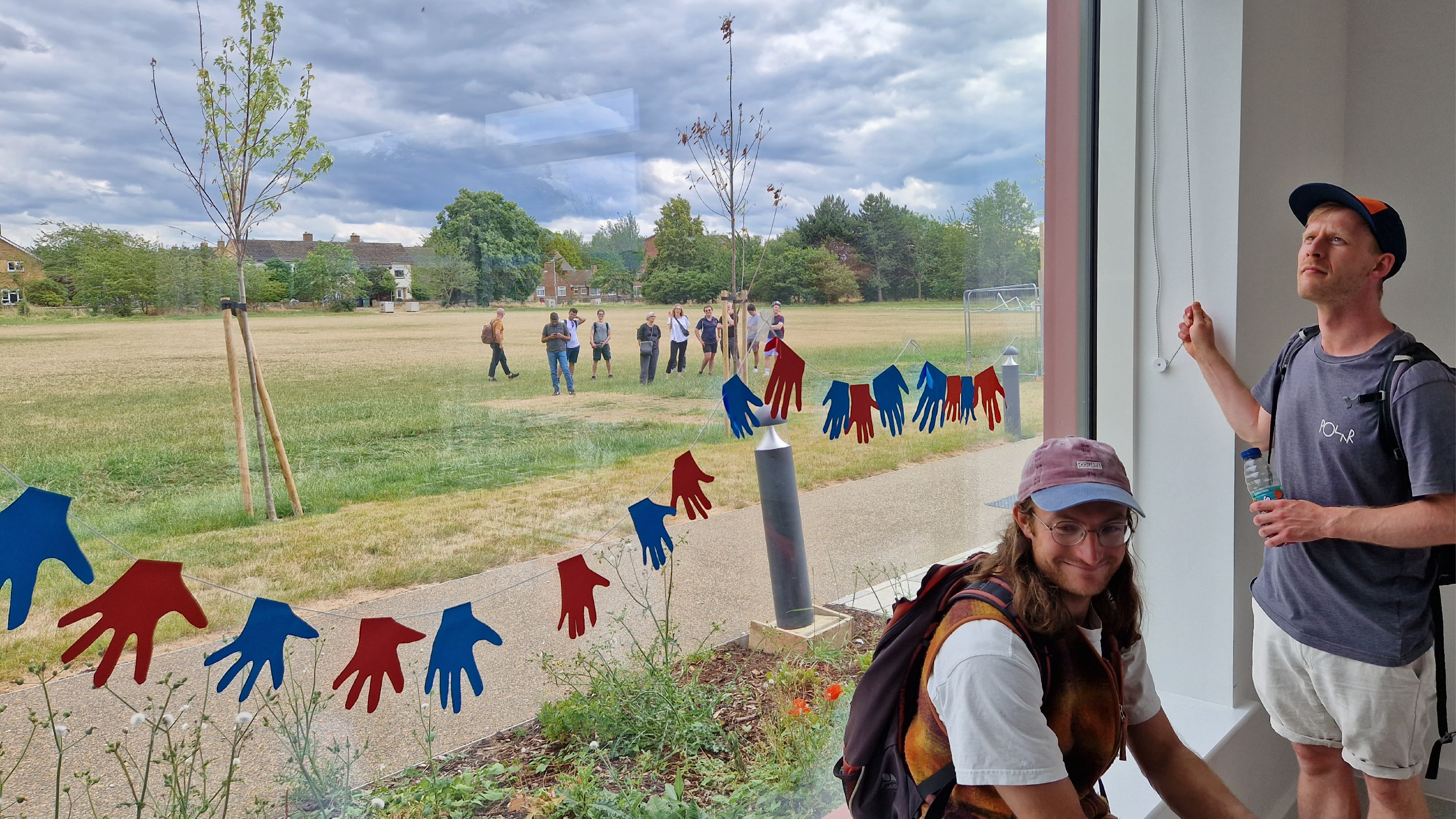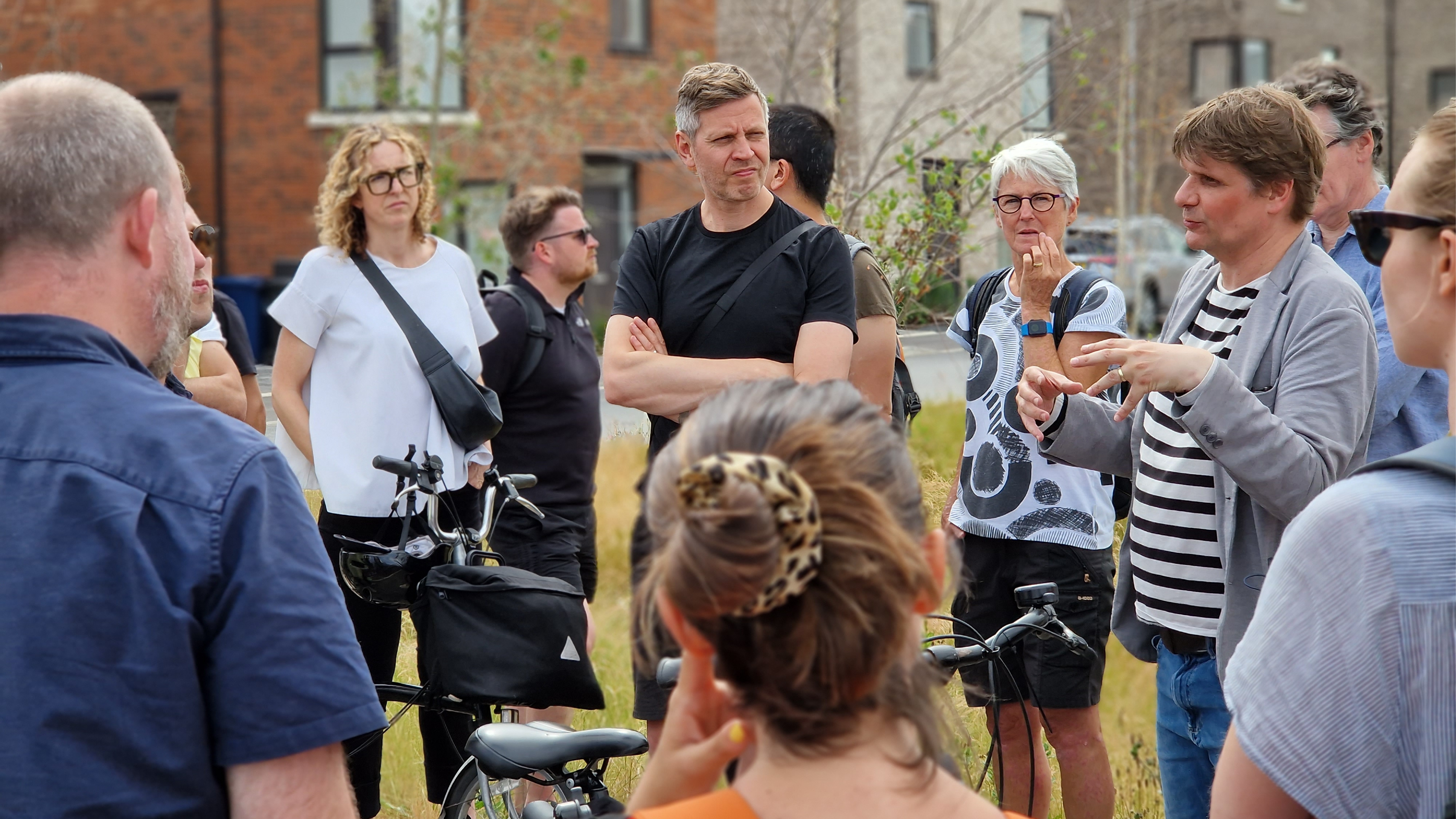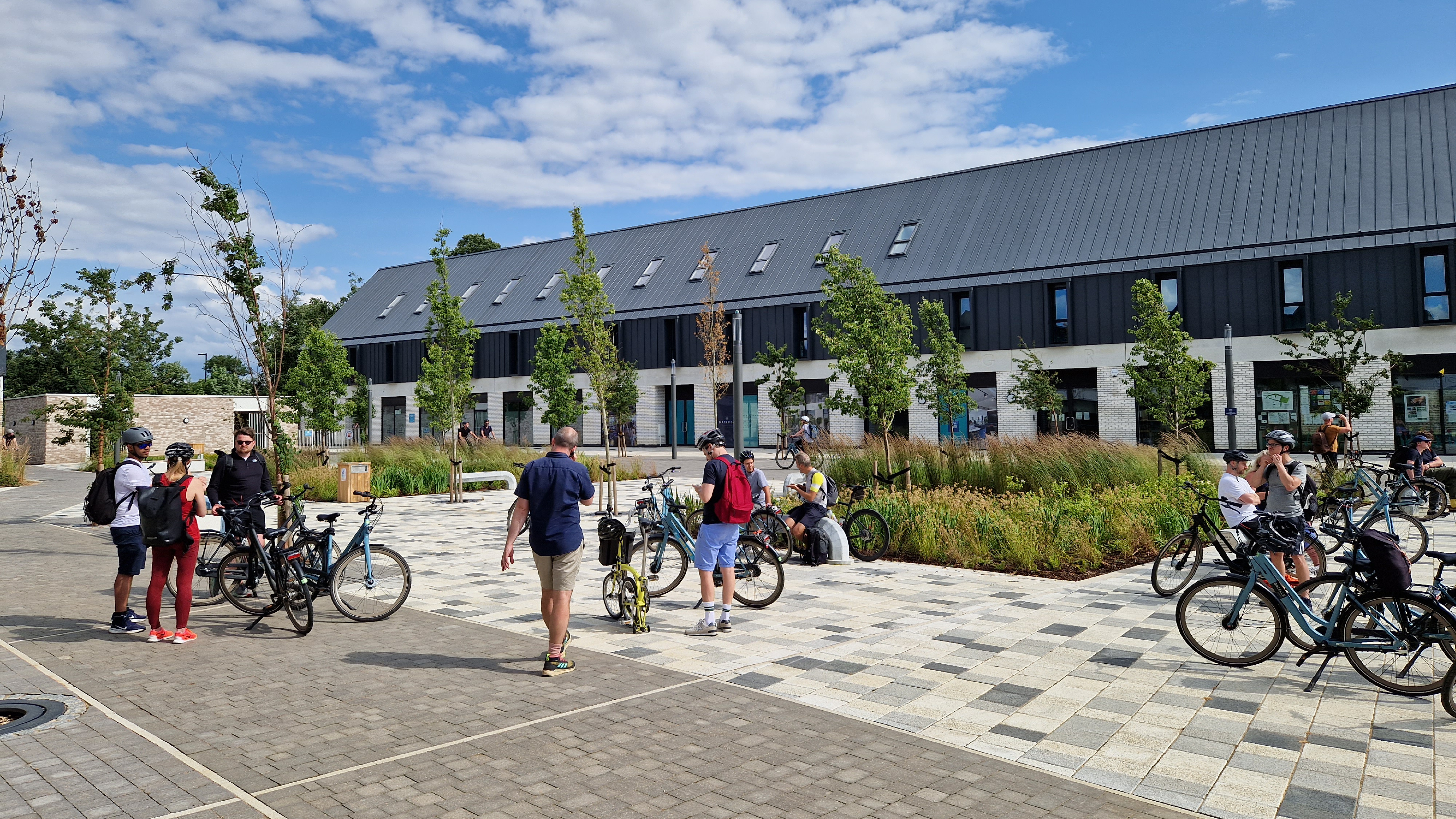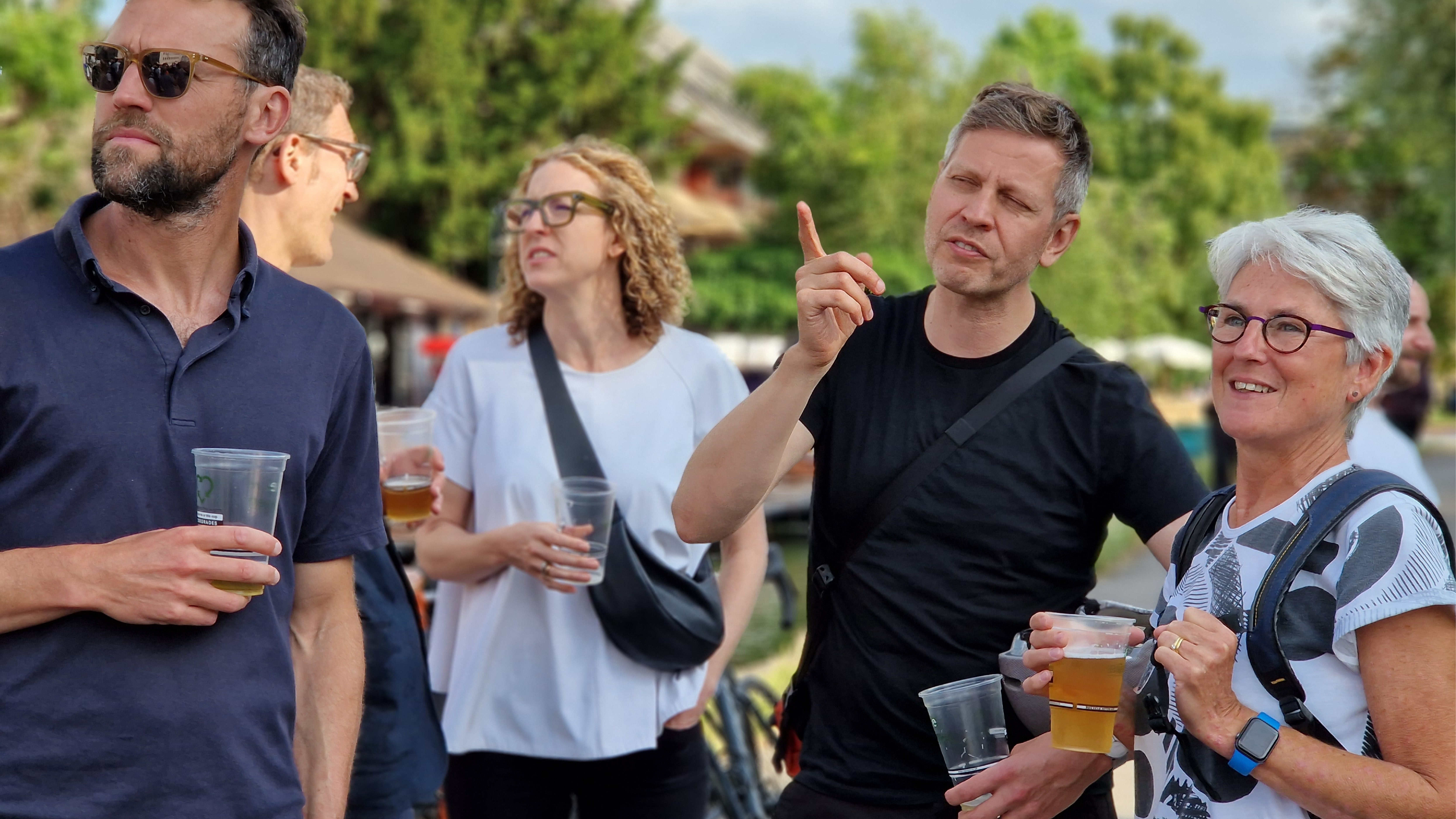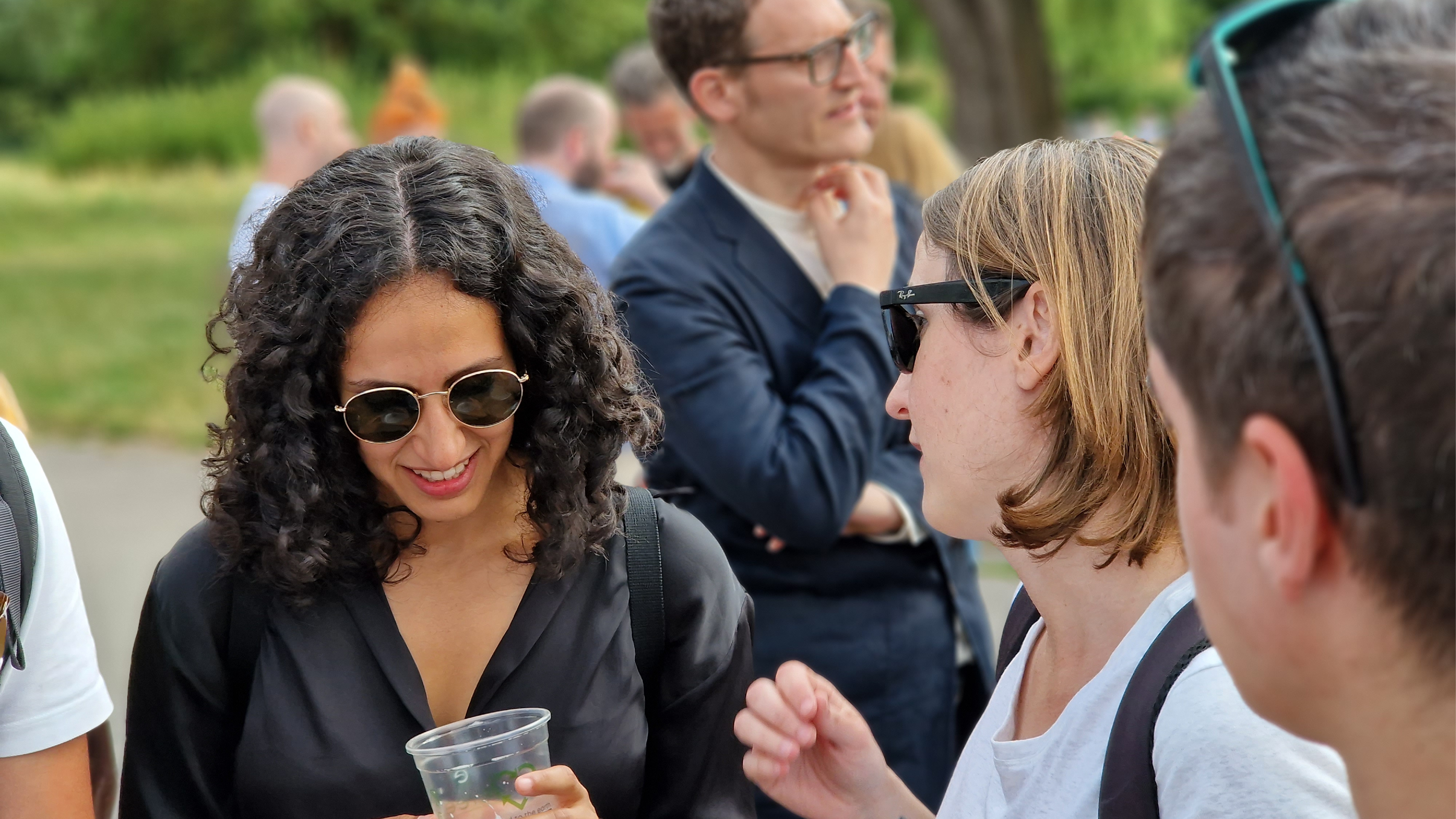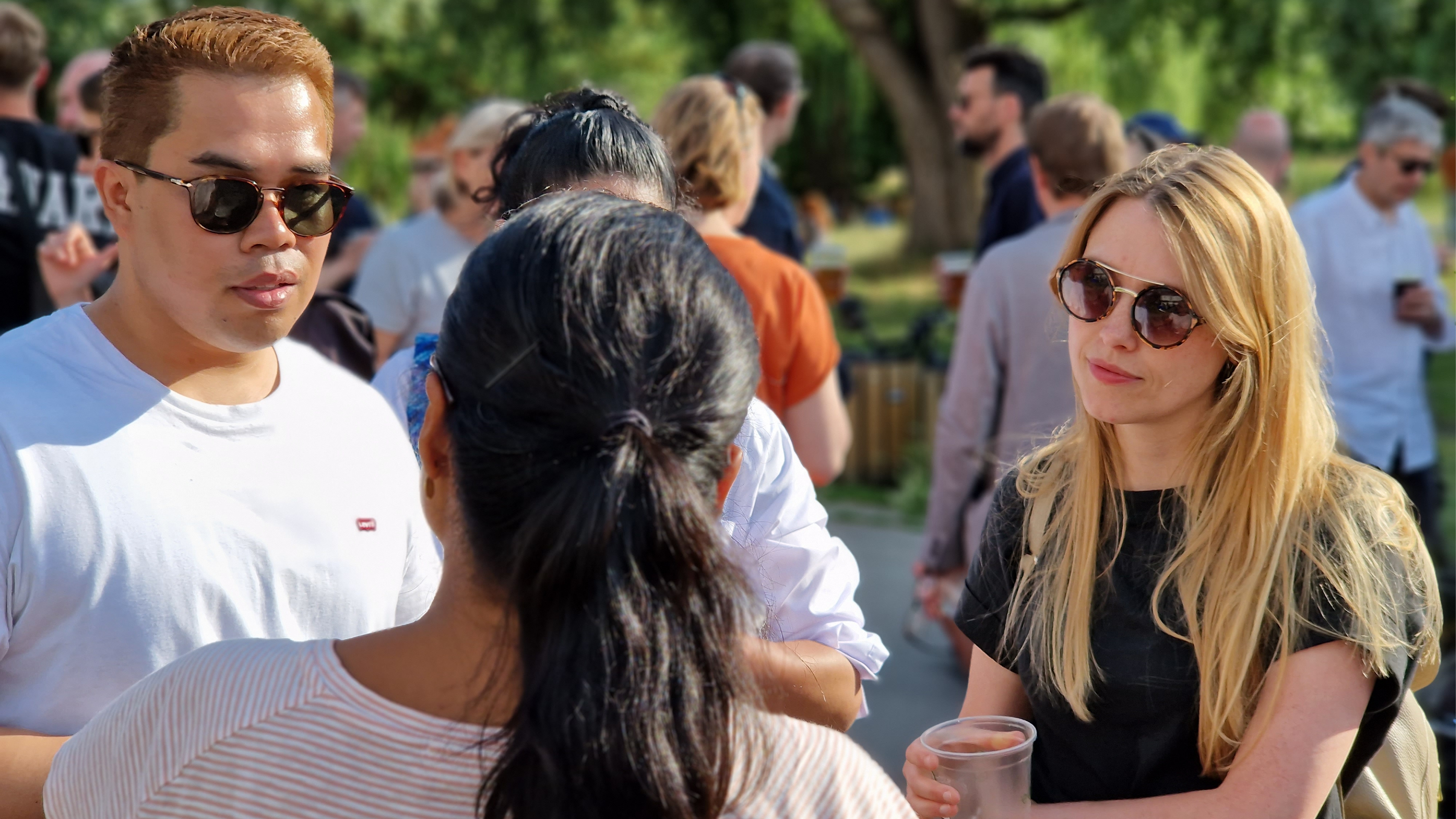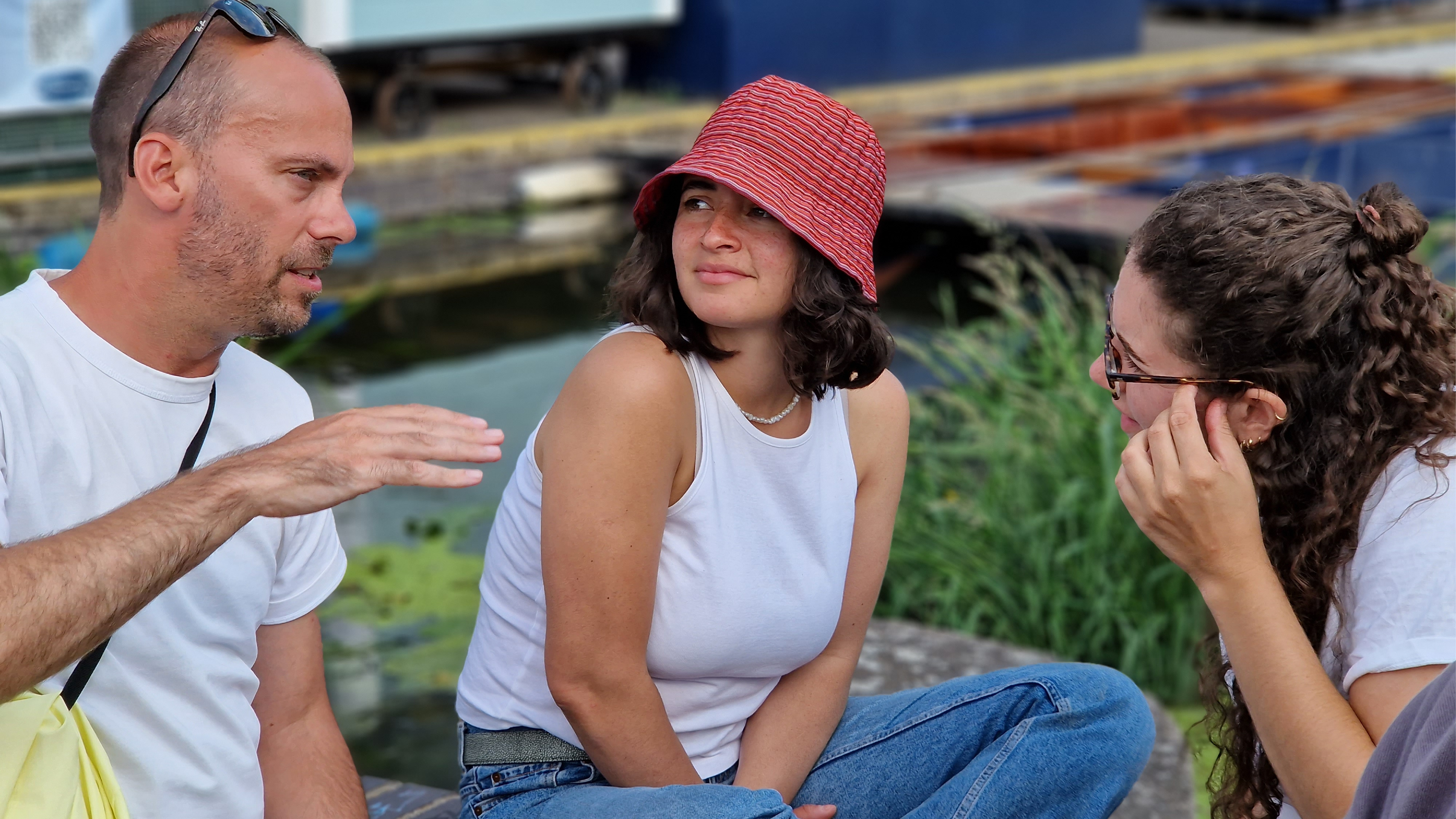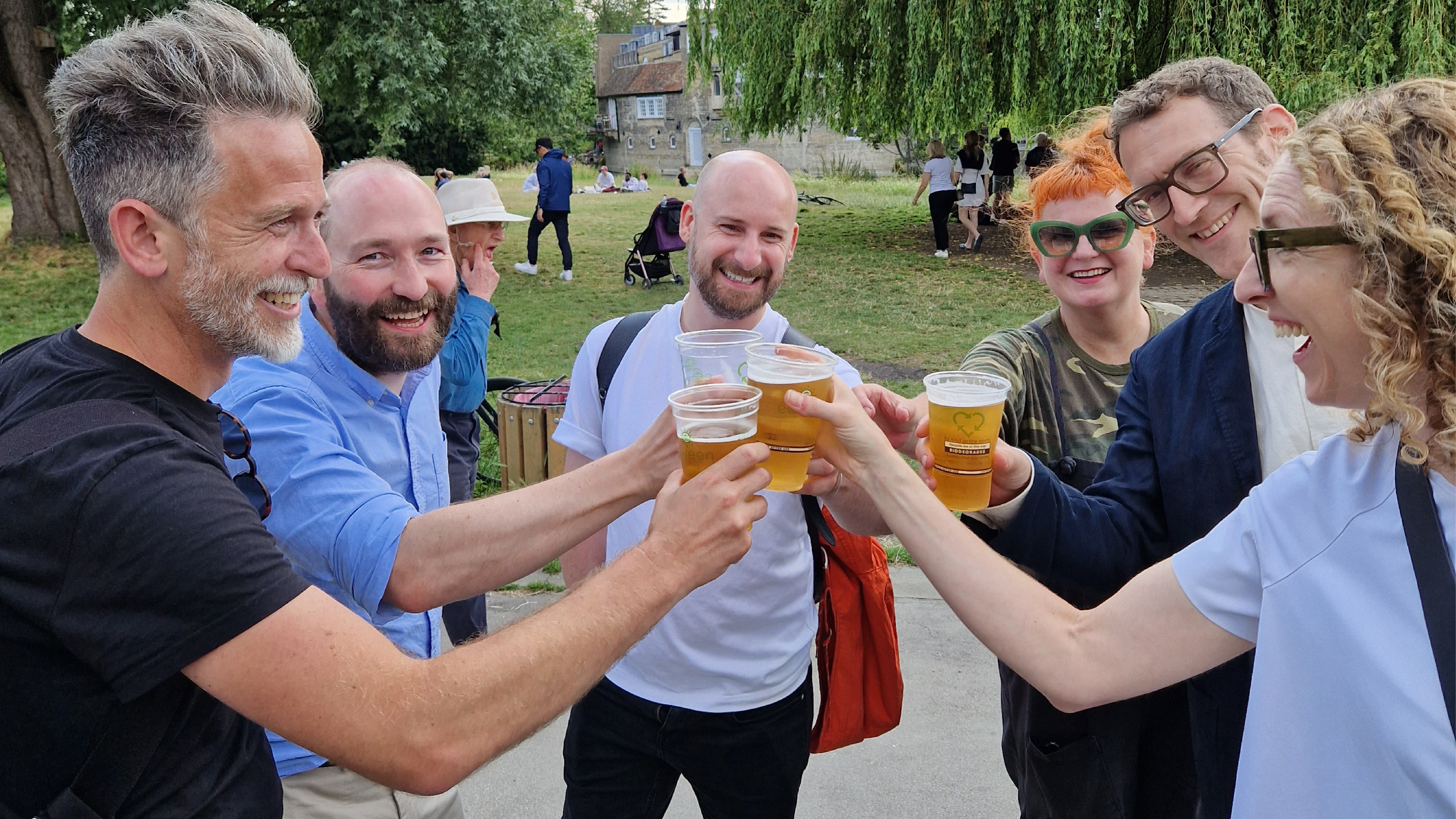Our June conference was a cycling field trip to Cambridge, to see five of our own projects.
Visiting Cambridge, journeying there by train, and then hiring bikes to go see our own projects – bikes because much of our work is on the city fringe, meant several things to all at PTE: a chance to learn by reviewing our buildings; a chance to socialise together, boost our health and wellbeing – and all this, using sustainable transport.

Spillers Mill and Ceres
There were around 80 of us, and we arrived in Cambridge at different times (coming from different places) but our first stop together, after collecting our bikes from a local hire shop (quite the peloton and a sight to behold) was Spillers Mill and Ceres. This 150-home, £19m neighbourhood of four new build pavilion blocks and a restored historic mill building, features robust patterned brickwork and decorative metal screens to balconies and stores - Peter Watkins and Teresa Borsuk shared its story with us.
Our colleagues (anonymously posted) commentary was upbeat. ‘What really caught my attention was the north elevation brickwork - really dramatic!’, said one while another noted that, ‘the clever use of oriel windows not only enhance the aesthetics but also create a captivating three-dimensional effect on the street.’

After Ceres, we cycled in the general direction of North West Cambridge. En route, we saw 2008 Stirling Prize winner Accordia and Stephen Taylor Court, a compact, landscaped Passivhaus student housing scheme by FCB Studios. We then arrived at Casson, Condor & Partners' 1961 faculty building, which, elevated on piloti, afforded stunning views across the adjacent 1967 history building, designed by James Stirling (with Michael Wilford).
We lingered for a while, taking in Leslie Martin’s neighbouring Harvey Court, designed with Patrick Hodgkinson and Colin St John Wilson, and completed in 1962 (‘the terraces and three-dimensionality proved inspirational for Knights Park’, explained Alexis Butterfield) before heading for Gillespie Kidd and Coia’s Robinson College (1974-1981), and its incredible integrated chapel with stunning stained glass. A short cycle away, Sheppard Robson’s 1962 Churchill College, with its series of overlapping, almost floating square courtyards and perfect Modernist concrete structures, hypnotised pretty much of all of us at PTE. ‘I could live in that building’ said Stephen Morris, reflecting on the trip’s highlights.
North West Cambridge
Next stop, the vast avenues and design-guided brick-clad townscape of North West Cambridge. Masterplanned by Aecom, it is a showcase of sorts - of contemporary architecture – with schemes by MUMA, Marks Barfield, Maccreanor Lavington, Mecanoo, Mole Architects, Stanton Williams, Wilkinson Eyre and Witherford Watson Mann. PTE is in the mix too, with Knights Park, the first phase of market housing to be commissioned and completed in this new University-backed neighbourhood.

Lunch
After chicken burgers in Eddington Square, on Charles Babbage Road, we cycled en masse to wander through it, and listen to Alexis and Teresa as they explained the backstory of this stunning scheme (it's divided into homes we designed alongside others by Alison Brooks Architects).

Knights Park, Eddington, North west Cambridge
Its green streets in particular - ‘bedding in nicely’ - wowed our colleagues. ‘Better than Marmalade Lane’ said one. ‘We should promote this more!’, they added. ‘There’s an intimacy here that compares well with Accordia', said another, with Gloria Vargas Palmer pointing out that ‘the atmosphere, the garden, the materials, and colours really create social value’. For some, Knights Park provided a ‘cozy environment’, while for others, it was typified by ‘gorgeous townhouses with great details’. Pretty much everyone agreed: here was a ‘coherent, calm neighbourhood.’ And it’s not even finished yet…

Meadows Community Centre
Our tour of North West Cambridge however, was, so in small groups, we began making our way over to Meadows Community Centre, a mixed-use scheme combining a multi-purpose community hub with 78 homes and a nursery. Dominique Oliver and Joe Chandler provided an overview, with our visit focused on the community building. Colleagues loved how ‘the size and proportion of the fenestration provide a sense of civic scale; how the signage ‘creates a great ‘place’ identity – Nikos should do more!’; the ‘fantastic setting’ and the ‘happy manager’ running the building. One colleague ‘especially liked the large picture window; it provides a stunning and interactive view for the nursery’.
Marleigh, Wing
The following bike ride was the longest trek of the day, to Marleigh in North East Cambridge, to see the first 500 or so homes on the 180 acre site by Cambridge Airport for which PTE prepared the 1,300-home masterplan and its Design Principles Guide. After Alexis’s talk, with input from Tom Dollard on the Passivhaus pilot homes on site, colleagues, most pleasantly surprised, piped up. There was, they said, a ‘coherent character, with scale ranging effectively across the site to provide genuinely varied places,’ while ‘different brick colours make each house unique and identifiable.’ The rain-gardens too were ‘exciting’ specially for the children who lived there. ‘My favourite detail?’ asked one colleague. ‘The corner windows. came the answer.
Timberworks, Cromwell Road
After mustering alongside the community centre in Marleigh’s new PTE-designed ‘town square’, we began our final study-tour of the day – a ten minute cycle to Timberworks, a nearly 300-home neighbourhood, mixing apartment blocks and family homes, endowed with a lush, green linear park and new cycle and pedestrian routes along the edge of central Cambridge’s main railway line. Dominique and Peter led the discussion of what one colleague called a ‘lovely family friendly place to live’, with another suggesting ‘follow up interviews with residents and photos’, to tell the social value story.

As we departed, cycling along the lane between the apartment blocks and the railway – ‘really, really well done – a proper place!’ – we headed for the final stop of the day: The Mill – ‘nuff said!




